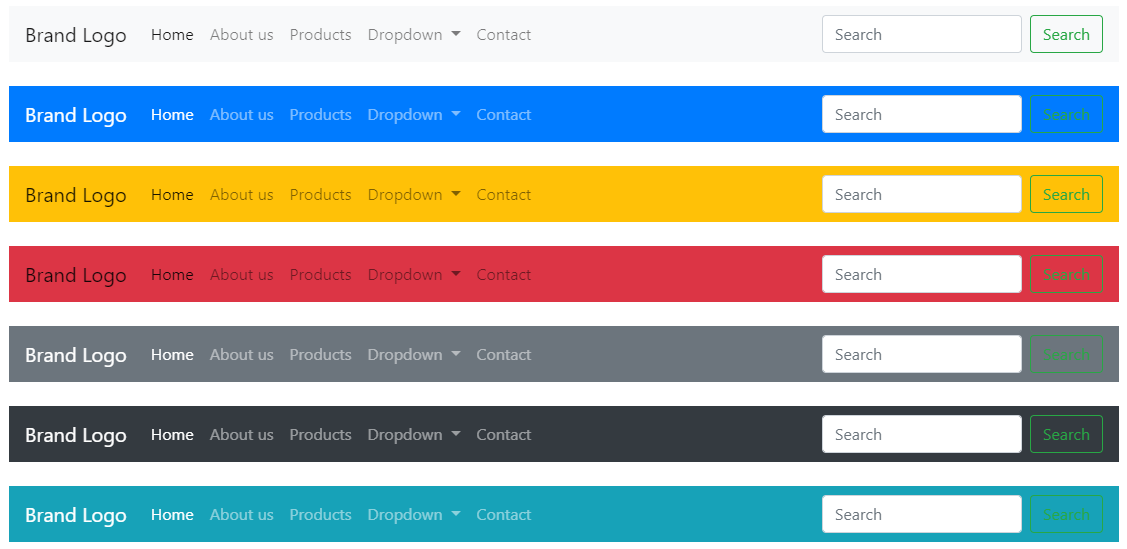 |
| Bootstrap 4 Navbar |
The Navbar completely supports responsiveness depending on various screen sizes. To create default navbar, use .navbar class along with responsive class .navbar-expand-sm|md|lg|xl. To create menu items with the hyperlink, Add .navbar-nav class to your <ul> element and add .nav-item class to your each <li> element inherited by an <a> element with .nav-link class for hyperlink.
Navbar with Background
To create navbar with color variation, include any of the contextual classes (.bg-primary, .bg-secondary, .bg-warning, .bg-danger, .bg-success, .bg-light, .bg-dark, .bg-info) to your navbar.Navbar with Dropdown
Navbar with Forms and Buttons
You can include inline forms or buttons to your navbar.Navbar Position - Default
Navbar Position - Fixed Top
Navbar Position - Fixed Bottom
See the Pen Bootstrap 4 Navbar Position - Fixed Bottom by Prime Study Hub (@PrimeStudyHub) on CodePen.
Navbar Position - Sticky Top
See the Pen Bootstrap 4 Navbar Position - Sticky Top by Prime Study Hub (@PrimeStudyHub) on CodePen.




Comments